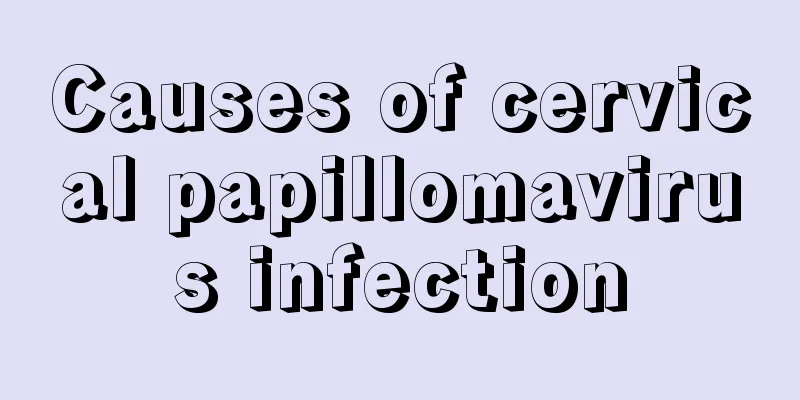Causes of cervical papillomavirus infection

|
There are many causes of cervical papillomavirus infection. If your relatives, friends, or neighbors unfortunately get cervical papilloma, please be sure to read this article carefully. Middle-aged women are particularly prone to cervical papilloma, and the treatment of this disease is particularly difficult. If family members do not take good care of them, infection is easy to occur. Below, let’s talk about cervical papillomavirus infection and its causes. Human papillomavirus belongs to the genus Papillomavirus of the family Papillomaviridae. It is a spherical, non-enveloped, double-stranded DNA virus with a diameter of 52 to 55 nm. The viral genome is a double-stranded circular DNA, approximately 7.8 to 8.0 kb, divided into early region, late region and regulatory region. The early region encodes proteins related to viral replication, transcriptional regulation and cell transformation (such as E5, E6, E7), and the late region encodes the major capsid protein L1 and the minor capsid protein L2. This virus cannot be cultured in vitro. There are more than 100 types, and the DNA homology between types is less than 50%. HPV is highly tropistic for skin and mucosal epithelial cells. The nucleic acid in situ hybridization method can detect the early viral genes in the basal cells of the skin; the late genes are only detected in differentiated keratinocytes. Virus replication can induce epithelial hyperplasia, epidermal thickening, accompanied by acanthosis and some degree of epidermal keratinization, and alkalitropic intranuclear inclusions often appear in the granular layer. Epithelial proliferation forms papillomas, also known as warts. Pathogenicity and immunity: HPV is mainly transmitted through contact with infected areas or contaminated objects. Genital infection is mainly transmitted through sexual intercourse. The life cycle of the new papillomavirus is closely related to the differentiation of epidermal cells. Newborns may be infected in the birth canal. Viral infections are usually localized and do not spread through the bloodstream. Different types of HPV can cause papilloma in different parts of the body. Skin warts are generally benign, HPV DNA is free, and some warts can disappear on their own. High-risk human papillomavirus is closely related to genital precancerous lesions and malignant tumors, and HPV DNA is often integrated into the chromosomes of host cells. The above introduces the causes of cervical papillomavirus infection in detail. I hope that these can reduce the suffering of patients with cervical papilloma. If everyone understands the causes of viral infection, they will pay attention to these problems and avoid viral infection. Family members of patients with cervical papilloma at home should also read this article in detail. |
<<: Why is it that I am bleeding again two days after my period?
>>: How to make black chicken soup
Recommend
Women still have sexual needs at the age of 60
Although women's sexual needs are not as stro...
What are the dangers of not having menstruation at the age of 40?
No woman wants to face the problem of amenorrhea,...
Lower abdominal pain and excessive vaginal discharge
Female friends must pay attention to the situatio...
White discharge after sex
Leucorrhea is a normal secretion from the female ...
How to effectively treat uterine cold and dysmenorrhea
Uterine coldness and dysmenorrhea seriously affec...
How many days does labor pain usually last?
After experiencing the ravages of childbirth, pre...
Gynecological adenitis
Adenitis is a relatively common gynecological dis...
What's in the Women's Beauty Guide?
Women should choose the right method when doing b...
Sudden back pain in late pregnancy
The late pregnancy is the period when pregnant wo...
Causes of vaginal odor during early pregnancy
Many women pay close attention to their every mov...
There is a nipple on the accessory breast
Having accessory breasts is very unsightly. First...
Should dragon fruit be refrigerated or kept at room temperature in summer? How to eat dragon fruit
Dragon fruit is not only sweet, but also has high...
Why should we insist on breastfeeding?
After millions of years of evolution, breast milk...
Do you know what you can’t eat during your period?
Women need an excuse when they have their period,...
Can I drink yogurt during medical abortion?
No matter which method of abortion is chosen, it ...









